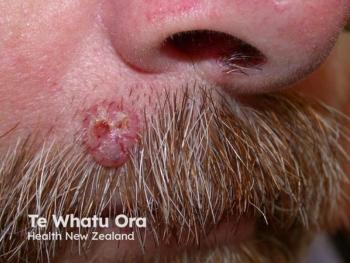
Integrating Vaccination Guidelines in Dermatology
Marc Serota, MD, provided clinical pearls to consider for patients on biologics, particularly dupilumab.
Marc Serota, MD, triple-board-certified dermatologist, allergist, and pediatrician, and founder of MD Integrations in Denver, Colorado, presented a comprehensive overview of vaccination protocols in dermatology at the
Risk-Benefit Analysis of Vaccines
Serota acknowledged the potential for adverse reactions but highlighted the overwhelmingly favorable risk-benefit ratio of vaccines. “If you look at the risk-benefit ratio, I don’t know that there’s a treatment we have in medicine that has a more favorable risk-benefit ratio than vaccines,” he emphasized. This sentiment frames the broader discussion on ensuring patients, especially those on systemic therapies, are appropriately vaccinated.
Key Age Milestones for Live Vaccines
For clinicians managing pediatric patients on systemic therapies,Serota stressed the importance of remembering key vaccination milestones: “So, I would like you to keep 2 numbers in mind, and the numbers are 1 and 4. Those are the ages when children get their live vaccines.”2
Vaccine Antigen Load
Addressing concerns about vaccine overload, Serota clarified that the number of antigens delivered through vaccines today is significantly lower compared to decades past. “Today, we give 305 antigens to protect us against 14 diseases,” he noted, compared to “3000 antigens to protect against 8 different diseases” in the past. This reduction underscores the efficiency and safety of modern vaccination schedules.3
Immune System Capacity
To allay fears of immune system overload, Serota explained the immune system’s vast capacity. “It’s estimated that you can simultaneously mount a response to 100,000 infectious antigens. So, 300 into a maximum capacity of 100,000 is a little bit like peeing in the ocean,” he said humorously.
Types of Vaccines and Their Relevance
Serota briefly reviewed the different types of vaccines, emphasizing inactivated and live attenuated vaccines. He pointed out that live attenuated vaccines, while effective, can pose risks for immunocompromised patients: “For most immunocompetent patients, it’s not able to cause immunologically active disease, but in a patient that is immunocompromised, there is enough activity left to actually cause pathogenicity.”
Practical Recommendations for Dermatologists
When working with patients on biologics, particularly dupilumab (Dupixent; Sanofi and Regeneron), Serota shared practical advice from a 2020 consensus meeting. He noted that “dupilumab does not appear to affect the development of antibody titers to inactivated vaccines.” However, for live attenuated vaccines, he recommended a strategic approach saying, “Live attenuated vaccines should be administered at least 4 weeks prior to starting dupilumab treatment and can be considered on a case-by-case basis.” Serota recommended measuring specific antibody levels to ensure serologic protection after receiving a vaccine while on dupilumab therapy. He also pointed out that there is no evidence to suggest that immunization while on dupilumab causes atopic dermatitis exacerbations.4
Specific Vaccine Guidance for Dermatology Clinicians
Serota discussed various vaccines relevant to dermatology and questions to ask patients to best serve them.
- Yellow Fever Vaccine: “One percent of your patients who get yellow fever vaccine will get symptoms of yellow fever,” he cautioned, emphasizing the need to inquire about travel plans.
- Shingles Vaccine: He differentiated between the live attenuated vaccine and the non-live recombinant vaccine, favoring the latter due to its better efficacy and safety profile.
- MMR and Varicella Vaccines: Highlighting their administration at 1 and 4 years old, he noted the option of checking antibody titers to potentially skip the second MMR dose.
- HPV Vaccine: Serota recommended the HPV vaccine for patients with recalcitrant non-genital warts, citing case reports and series supporting its efficacy in such cases.
Observing Patients After Vaccination
Serota said timing is key when administering vaccines to patients undergoing immunosuppressive therapy. He recommends a 1-month buffer period before and after vaccination when starting a biologic therapy. For those on oral JAK inhibitors, TYK2 inhibitors, or traditional immunosuppressants such as cyclosporine, cellcept, and methotrexate, a 1-month buffer is also advised, though seven days may suffice based on the medication's half-life. Key live vaccines to be aware of include MMR, Varicella, Yellow Fever, Zostavax, ACAM2000 (Monkeypox), rotavirus, nasal influenza, adenovirus (military), typhoid (military), and BCG (military). Additionally, he stresses the importance of observing patients for 30 minutes after administering an intralesional Candida injection to monitor for any adverse reactions.1
References
- Serota M. Systemics and vaccines: what you need to know. 2024 Fall Clinical Dermatology Conference for PAs and NPs; May 31-June 2, 2024; Scottsdale, AZ.
- Robison SG, Kurosky SK, Young CM, Gallia CA, Arbor SA. Immunization milestones: a more comprehensive picture of age-appropriate vaccination. J Biomed Biotechnol. 2010;2010:916525. doi:10.1155/2010/916525
- How vaccines strengthen your baby’s immune system. Centers for Disease Control and Prevention. August 5, 2019. Accessed June 1, 2024.
https://www.cdc.gov/vaccines/parents/why-vaccinate/strengthen-baby-immune.html . - Martinez-Cabriales SA, Kirchhof MG, Constantinescu CM, Murguia-Favela L, Ramien ML. Recommendations for vaccination in children with atopic dermatitis treated with dupilumab: a consensus meeting, 2020. Am J Clin Dermatol. 2021;22(4):443-455. doi:10.1007/s40257-021-00607-6
Newsletter
Like what you’re reading? Subscribe to Dermatology Times for weekly updates on therapies, innovations, and real-world practice tips.


















